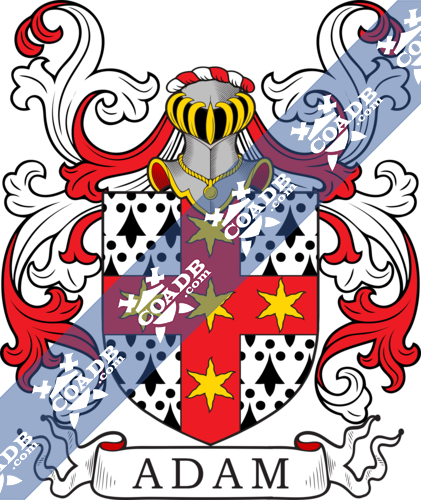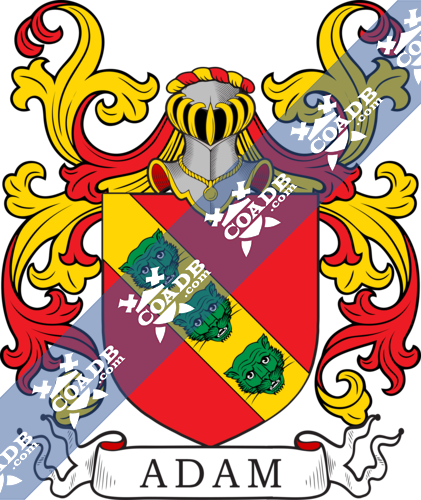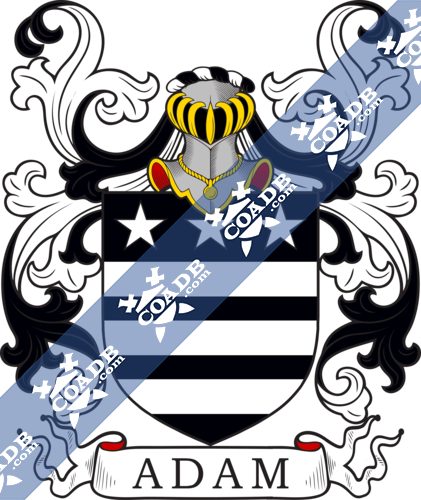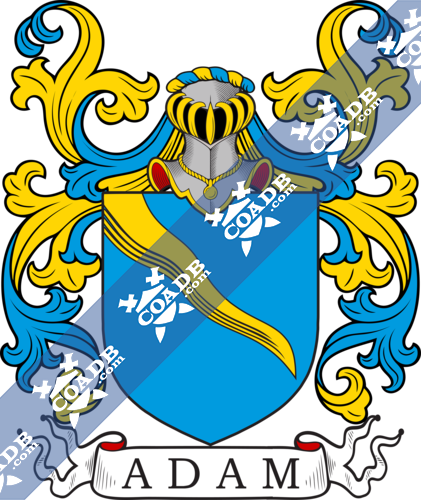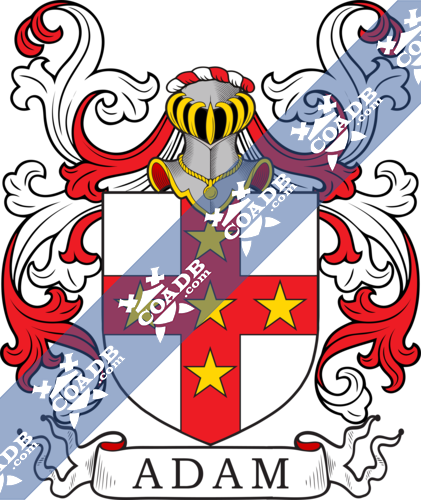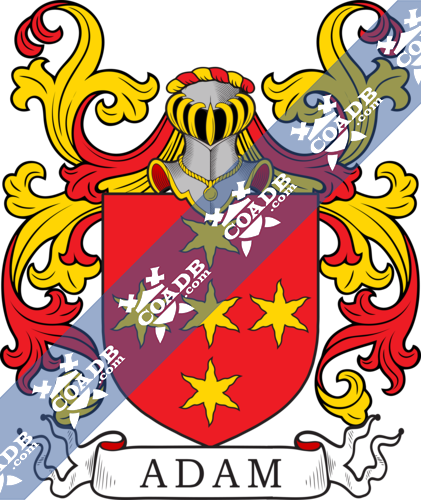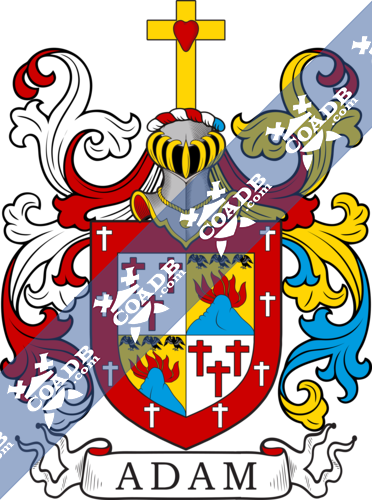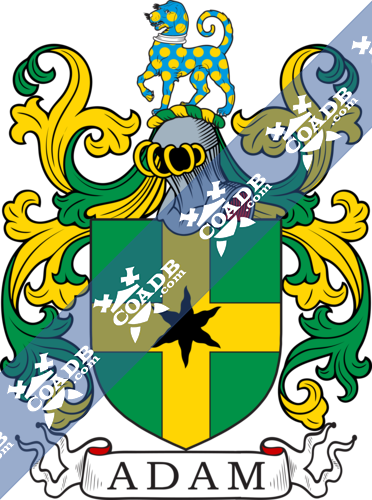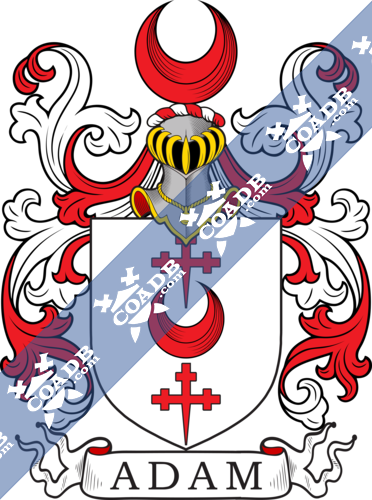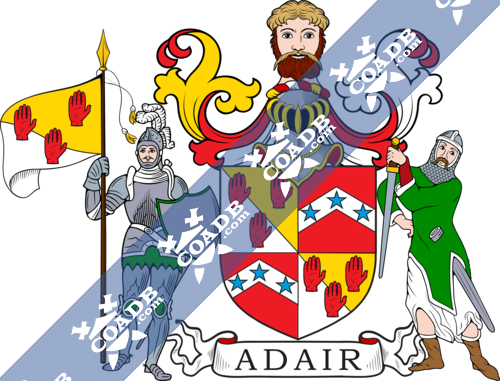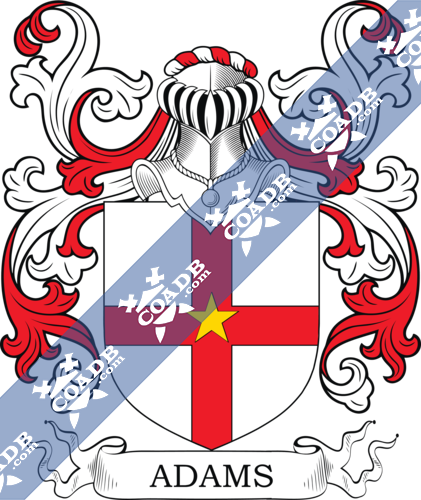Adam Family Crest, Coat of Arms and Name History
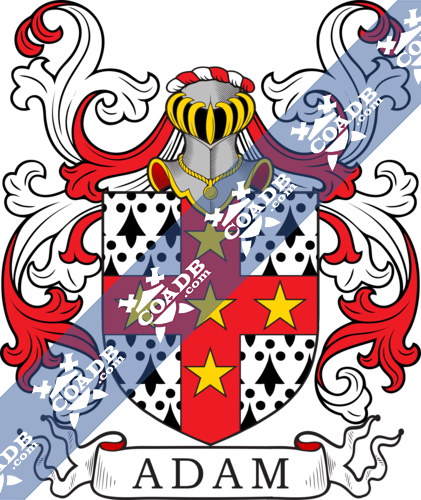
Adam Coat of Arms Gallery
Don’t know which Coat of Arms is yours?
We can do a genealogical research. Find out the exact history of your family!
Learn MoreADAM
The surname Adam is thought to have come from the Hebrew given name “adama” which translate as “earth”, a meaning associated with the Judaeo-Christian teachings that God created Adam from earth. In this context the name would be considered patronymic. Surnames were often created by using an identifying factor about a person such as; using one of their parent’s or ancestor’s names to create a patriarchal or matriarchal surname, a familiar geographical location or a topographical landmark found near the individuals home or birthplace, their occupation, or a defining physical trait among other things. There was almost a limitless source from which surnames could be formed.
The surname can be English, Scottish, Irish, Polish, French, Greek, Italian, German, Dutch, Russian, Hungarian, and was found as a surname among the Jewish population in the 1700’s. It is unknown exactly when the name migrated to Europe, whether its popularity came about as Christianity became more wide spread, whether like a number of Biblical names it was brought back by soldiers returning from the Crusades in the Holy Lands or whether it came to be by some other means, the name eventually could be found throughout most of Europe. It should be noted at the time of the Crusades, there was not a standardized text for the Bible, with some versions having both Latin and Hebrew passages. Having a surname from the Levant or Holy Lands could be seen as an act of religious piety.
There are over seventy variations of the spelling of the name which include but are not necessarily limited to; Adam, Adami, Adamo, Adamsom, Adamsson, Adamsen, Adamsky, Adamec, Adamceck, Adamcyzk, Adamski, and Adamik. The variation in spelling of names during this time period can be attributed to the diversity of languages in use in European countries at this which was often compounded by a lack of continuity regarding guidelines for spelling during the earlier ages and the prominent lack of literacy among the general population.
In ancient and medieval times and even later in some cases, literacy was a skill usually found only among the noble class, the clergy, and government scribes and officials, due to this fact, the task of record keeping was predominantly the responsibility of the churches, priories, and government. Until the 16th century surnames were not in common usage except among the aristocracy. As populations grew in size and immigration became more commonplace, the use of surnames was found to have a
practical use as it allowed the government to keep more accurate tax, census, and immigration records.
One of the earliest records of the name is that of Alianor Adam which appears in Cambridgeshire tax rolls. The tax rolls were a series of financial records kept by the English Treasury by order of King Edward I, with the oldest dating back 700 years to the 12th century. They hold the distinction of being the oldest consecutive set of records detailing English governance in the United
Kingdom.
One of the first recorded immigrant to America bearing the surname was John Adam who landed and settled in Virginia in 1663. Thomas Adam landed and settled in Virginia in 1665. Some of the many immigrants to the British Common Wealth countries of Canada, Australia, and New Zealand bearing the surname include; Anne Adam who landed in Quebec in 1675 William Adam who landed in New South Wales, Australia in 1825, and John and Elizabeth Adam who landed in Auckland, New Zealand in 1842.
Worldwide, the highest concentration of people with the surname Adam are found in Hungary, Belgium, Germany, France, and Canada. By state, the largest percentile of those with the surname Adam live in Nebraska, North Dakota, and South Dakota.
There are many persons of note who bear the surname such as British born Sir Frank Forbes Adam, 1st Baronet who was a banker and President of the Bank of Bombay. In 1888, Adam was created Companion of the Order of the Indian Empire. In 1890, he was knighted and award Knight Bachelor. In 1917, he was created Baronet of Hankelow Court, Sussex and in 1919, Adam was made a Companion of the Order of the Bath.
British born General Sir Ronald Forbes Adam, 2nd Baronet, oldest son of Sir Frank Adam, was a senior British Army Officer, veteran of World War I and II, and Deputy Chief of the Imperial General Staff. Adam was awarded Knight Grand Cross of the Order of the Bath and Officer of the Order of the British Empire.
In the United States of America notably the first Vice President and Second President resided within John Adams of Massachusetts, with his son John Quincy Adams becoming the sixth US President. They were the first father and son to ascend to the highest office in the Executive branch of American Politics. Both were considered to be extremely well talented and able politicians, John Adams was one of the framers of the Declaration of Independence, member of the first Continental Congress, and diplomat to France during the American Revolution. His son John Quincy Adams is considered to be one of if not the finest diplomat and politician of the 19th century. He served multiple posts as an ambassador, and was the author of the “Monroe Doctrine as the Secretary of State under President James Monroe, and later served as the sixth US President.
Blazons & Genealogy Notes
(Blair Adam, co. Kinross, 1815). Motto—Crux mihi grata quies. Quarterly, 1st and 4th, ar. a mullet az. pierced of the field betw. three cross crosslets fitchee gu.; 2nd and 3rd, ar. three arrows gu. the midmost paleways the other two saltireways, points downwards banded together vert, accompanied with six trefoils slipped of the last, two in chief two in fess and two in base, for Littlejohn. Crest—A cross crosslet fitchee gu. surmounted of a sword in saltire ppr.
1) (Bury St. Edmunds). Erm. on a cross gu. five mullets or.
2) (London, 1590). Ar. on a cross gu. five estoiles or.
3) (Whiteslaid, co. Selkirk, 1731). Motto—In cruce salus. Quarterly, 1st and 4th, ar. three passion crosses gu.; 2nd and 3rd., or, a burning hill az. in chief three ravens wings expanded ppr. a bordure of the second charged with eight passion crosses of the first. Crest—A passion cross or, charged with a man’s heart ppr.
4) (Walden, co. Essex, assigned by Camden, Clarenceux to Thomas Adam, Esq., 30 Sept. 1614). Vert on a cross or, an etoile sa. Crest—A talbot passant az. bezantee collared ar.
5) (London). Gu. on a bend or, three leopards’ heads vert.
6) (Lincolnshire). Sa. three bars ar. in chief three mullets of the last.
7) (Christchurch, co. Hants). Ar. a crescent betw. three crosses crosslet fitchee gu. Crest— A crescent as in the arms.
8) (Lord ap Adam temp. Edward I.). Az. a ray of the sun issuing out of the dexter corner bendways ppr.
9) Ar. on a cross gu. five mullets or.
10) Gu. five estoiles in cross

